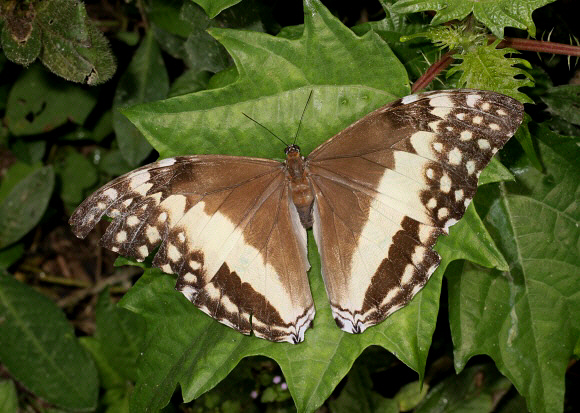
Introduction
There are about 29 described species of Morpho, possibly more. The status of some subspecies is contended by certain taxonomists who consider they should be elevated to the rank of full species.
The dazzling blue wings of Morpho butterflies are enormous relative to their body size, resulting in a very distinctive slow, bouncy flight pattern. The effect is that the brilliant blue upperside appears to flash like a beacon as it alternates in flight with the dark undersurface. This makes it difficult for a bird to follow the flight. If attacked when on the wing, the slow lazy flight pattern instantly changes into a wild swooping evasive manoeuvre, following which the butterfly dives into the forest where it instantly settles. A pursuing bird is still of course searching for a brilliant blue insect, but the Morpho snaps its wings shut, displaying the dark brown underside and foiling the bird’s search program. If the bird does manage to spot the settled butterfly it invariably aims its attack at the most prominent feature – in this case the ocelli, missing the body entirely and allowing the butterfly to escape.
As with many Morpho species, the female of marcus lacks the brilliant blue colouration of the male.
Some taxonomists still refer to Morpho marcus by its former name Morpho adonis, which is now regarded as an invalid synonym. The butterfly is found from Colombia to Guyana, and south across the Amazonian region to Peru.
Habitats
This species is found in mid-elevation rainforest at altitudes between about 300-1000m.
Lifecycle
I have no data specific to marcus. The eggs of most other Morpho species are dome-shaped and pale green with a narrow reddish ring near the top. Most Morphos lay apparently their eggs singly but several Morpho species have gregarious larvae, strongly suggesting that their eggs are laid in clusters. Fully grown larvae are plump, with a large head. Their bodies are beautifully patterned with fine longitudinal lines of bright red, yellow and black, and covered with fine brown hairs which are tufted near the head and tail, and in the middle of the back. Morpho larvae feed on the leaves of a wide range of trees in the family Fabaceae including Macharium, Pterocarpus, Lonchocarpus, Swartzia and Dalbergia. The larvae have eversible glands on the thorax which emit a strong odour as a defence against predators. The pupae are pale green and bulbous, and are suspended from a stem or leaf of the foodplant.
Adult behaviour
To be completed.
